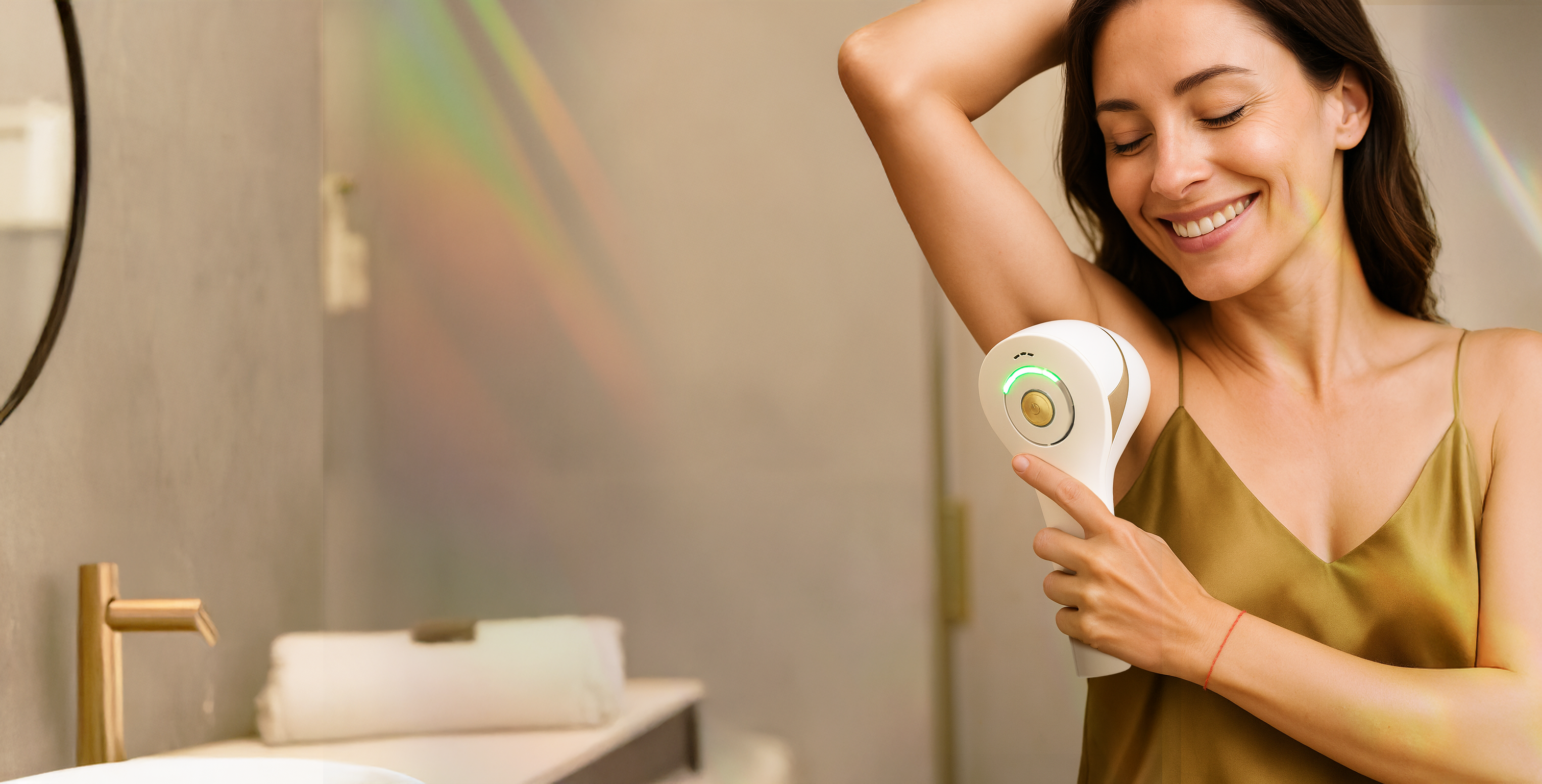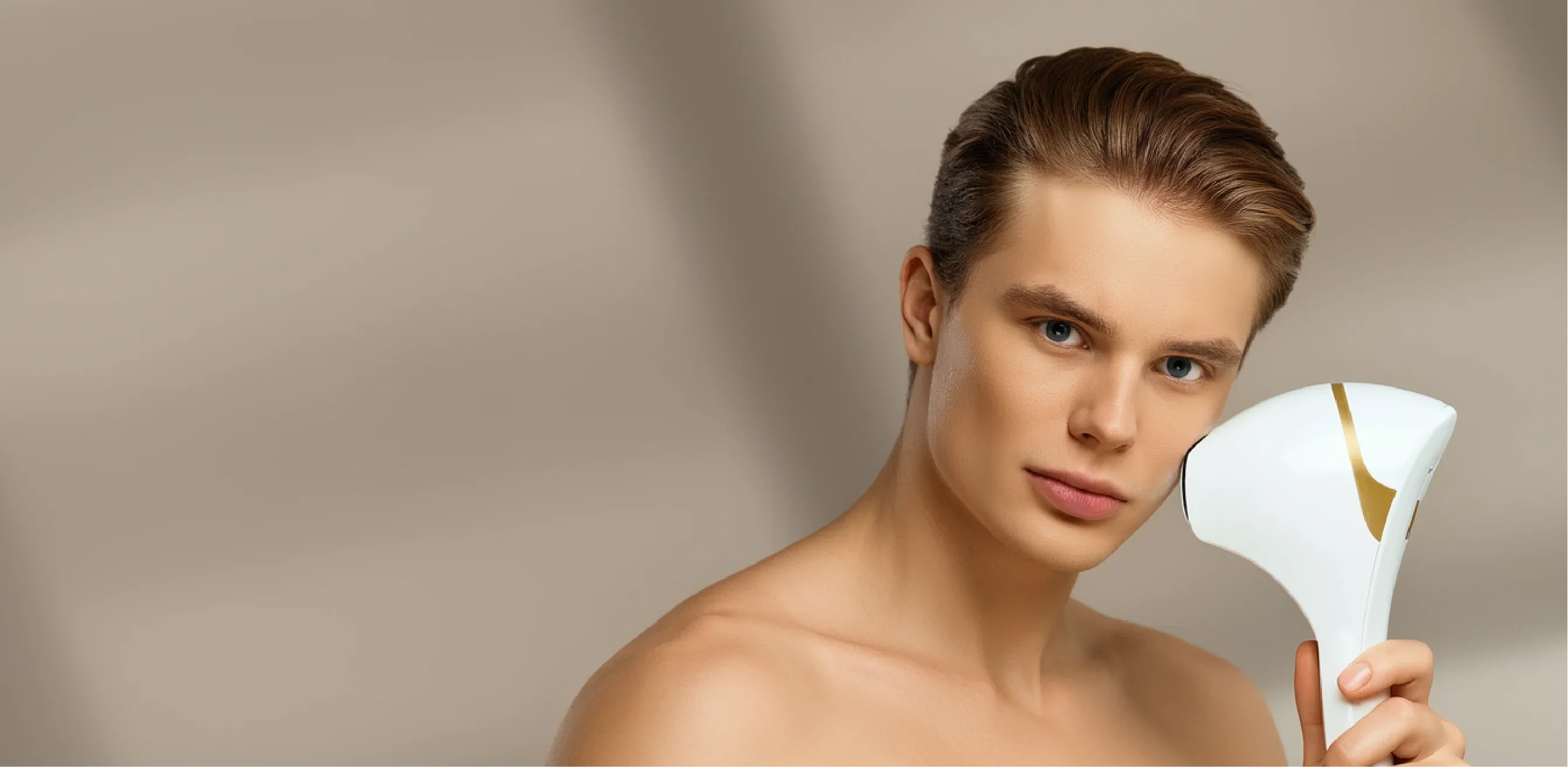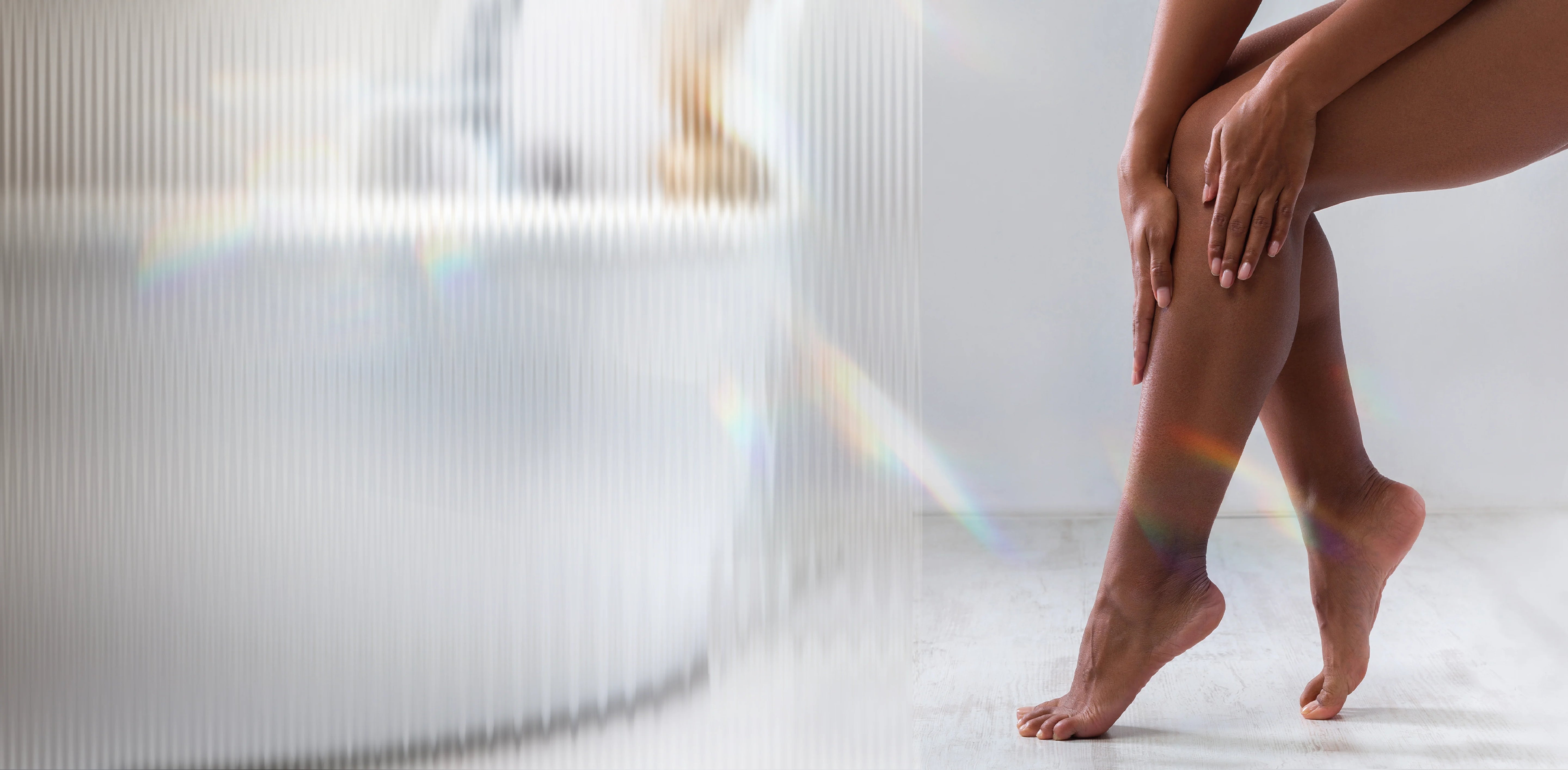How Often Should You Perform Laser Hair Removal at Home?
by Noah Cooter
With sixty-plus years of history, laser hair removal has become the most advanced hair removal method available. Some of us remember a time when laser treatments were only available in clinics. Factors pertaining to safety and effectiveness—such as treatment frequency—were determined by a trained clinician in a professional laser hair removal clinic. Nowadays, there’s no shortage of at-home devices available on the market. While at-home lasers offer a new level of convenience for hair reduction, they also lead to many questions. People who desire hair-free skin deserve to know how their device works, how often to use it, and how to achieve safe and effective results. This knowledgebase exists to answer all your questions. In this article, we’ll focus on how often you should conduct at-home laser hair removal treatments.
Factors that Affect Treatment Frequency
Predictably, your laser treatment frequency will depend on how fast your hair grows. If there’s no hair, there’s no point in treating the area. Even when the area is ready for treatment, frequency can be limited by the laser hair removal device and technology you’re using. Many laser hair removal devices are unsafe when used too frequently, especially if you have dark skin. We’ll dive into device-specific guidelines later in the article.
Hair color and coarseness will affect laser treatment frequency as well. Contrary to what you might think, people with coarser hair tend to require treatment less frequently. This is because laser hair removal devices work more effectively on coarse hair. There is more cellular structure and more pigment for the laser to affect. Since treatments are more effective, people with coarse hair will often experience smooth skin for a longer duration before the next treatment is required.
Skin sensitivity is another important factor to consider when deciding how often to perform treatments. Almost all at-home lasers and IPLs can irritate the skin, which may prevent you from performing treatments as often as you’d prefer. In fact, it can be dangerous to perform treatments too often with many at-home lasers, especially for those with darker skin tones. However, not all lasers are created equal. With Epilaser, you’re free to treat as often as you’d like. We’ll unpack the reason behind this benefit later. For now, let’s take a deeper dive into the science behind hair growth.
The Cycle of Hair Growth
Biological entities grow in cycles, and hair is no exception. There are four phases recognized in the hair growth cycle: anagen, catagen, telogen, and exogen. Understanding these cycles can enable informed decision making when it comes to laser hair removal.
Anagen Phase
The anagen phase is the active growth phase, during which hair follicles actively produce new hair. During this phase, hair follicles produce new cells, leading to hair elongation.
Catagen Phase
Catagen is the transitional phase, when hair growth slows and follicles begin to shrink. The hair becomes a "club hair" and separates from the follicle. Catagen marks the end of the active growth phase and prepares the follicle for the resting phase.
Telogen Phase
The telogen phase is the resting phase of the hair growth cycle, where the hair follicle is dormant and not actively growing. In this stage, the hair is loosely attached to the follicle and can shed naturally when brushed or washed. As the telogen phase progresses, new hair starts to develop at the base of the follicle, and it will eventually push the old hair out.
Exogen Phase
The exogen phase is the shedding phase of the hair growth cycle, where old hair is naturally shed and replaced by new hair growth. During this phase, it's normal to shed 50-100 hairs daily.
Implications for Laser Hair Removal
Laser hair removal is most effective during the anagen phase. This is when the follicle is most effectively disabled. Therefore, it is best to complete laser treatments as soon as new hair forms. If you see active growth, this is a good time to begin laser treatment.
Guidelines by Device Type
In addition to the factors above, the ideal treatment frequency depends on the device you’re using. Many at-home laser devices recommend waiting multiple weeks in between treatments. This is because most at-home lasers pose a risk to your skin if used incorrectly. You should always consult the documentation that accompanies your device and follow all instructions. Here are some average treatment frequencies associated with common devices:
IPL Devices
Many at-home Intense Pulsed Light devices recommend 2 to 3 treatments per week to start out. Since IPL energy affects the skin as it damages the hair, it can cause skin damage, and therefore be a poor choice for those with sensitive skin. If skin irritation becomes too uncomfortable, it is recommended to lower the treatment frequency. If hair regrowth begins to slow noticeably, treatment intervals can be lowered to once or twice per week. As always, follow the instructions that came with your device.
Diode Lasers
Diode is an advanced technology that can target hair follicles with great precision, but at-home diode laser devices vary widely. Recommended treatment frequencies range from a few times per week to a single treatment every 1 to 1.5 months. As the treatment progresses and hair regrowth slows, sessions can be spaced out to once every 2 months (or as often as prescribed by your device’s documentation).

Epilaser
During the initial treatment phase, most users attain optimal results by treating with Epilaser 2 to 3 times per week. After about 3 months of consistent use, a dramatic reduction of regrowth will be observed. Epilaser treatments can then be reduced to once every two weeks, or as-needed. Once you’ve removed the majority of unwanted hair follicles, it’s easy for people of all skin tones to maintain silky-smooth skin moving forward. Even as follicles are deactivated and removed, it is possible for new follicles to grow over time. With Epilaser you can treat with confidence because it’s impossible to use the device too frequently. The lasers will not activate when no follicles are present. Since Epilaser doesn’t affect your skin, you don’t have to worry about sun exposure after treatments.
How Often is Too Often?
Using certain laser devices too often can damage skin within the treatment area. In fact, every other device on the market will caution you to avoid treating too often. With Epilaser 808 and Epilaser 980 (device for dark skin), you can repeat treatments as often as you’d like. If there are no hair follicles present, Epilaser won’t engage the lasers. That’s why Epilaser is so gentle. Unlike with other lasers, it’s impossible to overwork the skin. Epilaser doesn’t affect skin at all.
Conclusion
The optimal frequency for laser hair removal depends on a number of factors, including device type, skin tone and hair color, skin sensitivity, and rate of hair regrowth. Body area is also a factor. For example, you might find a higher treatment frequency is necessary for legs hair removal compared on the bikini line. You should always consult the documentation that accompanies your at-home device. Many of the leading devices recommend beginning with 2 to 3 treatments per week. If you experience skin irritation or other side effects, you should decrease treatment frequency. Be sure to conduct thorough research before purchasing any at-home beauty device. You’ll want to be sure you’re getting the ideal device for your needs before making an investment.






Share:
At-Home Vs. Professional Laser Hair Removal Devices
Laser Hair Removal Side Effects and How to Avoid Them